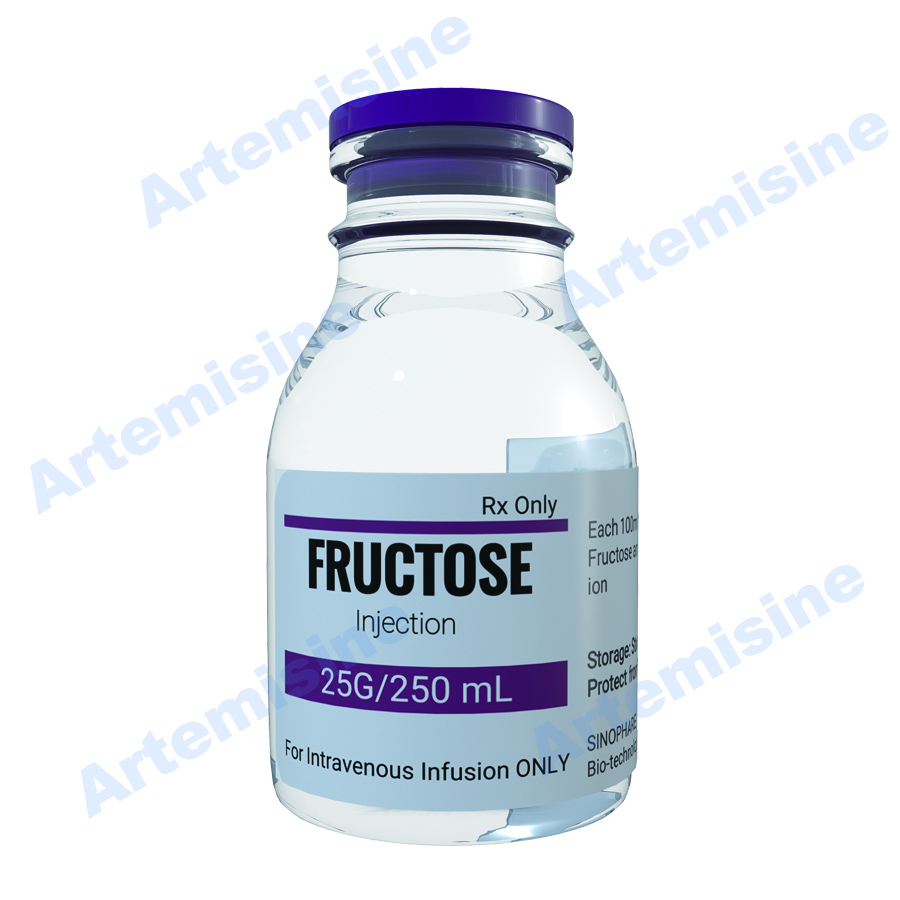Product Description
Product Name:
Fructose Infusion
Contains:
Cimetidine 25gram
Package:
250 ml;
Indication
1. Thinner for injection.
2. It is used for the rehydration treatment of patients who need to supplement water or energy when they are in the state of insulin resistance such as burn trauma, post-operation and infection or are not suitable for using glucose.
Usage and dosage
Slow intravenous infusion, generally 5-10% fructose injection 500 ~ 1000ml per day. The dosage is adjusted according to the patient’s age, weight and clinical symptoms. The molar concentration of osmotic pressure should be 540~660mOsmol/kg.
Adverse reaction
1, circulation and respiratory system: excessive input can cause edema, including peripheral edema and pulmonary edema.
2, endocrine and metabolism: rapid drip rate (≥1g/kg/hr) can cause lactic acidosis, hyperuricemia and abnormal lipid metabolism.
3. Electrolyte disturbance: dilution hypokalemia.
4. Gastrointestinal reactions: occasional upper abdominal discomfort, pain or spasmodic pain.
5. Occasional fever and urticaria.
6. Local adverse reactions include injection site infection, thrombophlebitis, etc.
taboo
Contraindicated in patients with hereditary fructose intolerance, gout, and hyperuricemia.
Caution: Excessive use of this product may cause life-threatening lactic acidosis. Use of this product in undiagnosed patients with hereditary fructose intolerance may be fatal.
Note
1. Use with caution in patients with renal insufficiency, acidosis tendency and hyperuricemia.
2. Excessive use of this product can cause serious acidosis, so it is not recommended to replace glucose in parenteral nutrition.
3. Clinical and laboratory indicators should be monitored during use to evaluate fluid balance, electrolyte concentration and acid-base balance.
4, careful to prevent excessive water and electrolyte disorders.
5. Excessive infusion of potassium free fructose can cause hypokalemia. This product is not intended to correct hyperkalemia.
6, this product can aggravate the oxidation of methanol into formaldehyde, so this product should not be used for the treatment of methanol poisoning.
7, the injection speed of this product should be slow, not more than 0.5g/kg/hr is appropriate.
Drug overdose
Infusion of this product does not exceed 300g fructose per day, excessive infusion to prototype excretion from the urine. Because large infusions can cause lactic acidosis and hyperuricemia, some countries limit the daily dose to 25g of fructose.
Pharmacology and Toxicology
Fructose injection is an energy and fluid supplement. Fructose is easier to form glycogen than glucose and is metabolized mainly in the liver through fructokinase, which is easily metabolized into lactic acid and quickly converted into energy.
Pharmacokinetics
Literature reports: Healthy volunteers were injected with 10% fructose at the rate of 0.1g/kg/hr for 30 minutes. After the infusion was stopped, the blood concentration showed a rapid decline in first-order kinetic form. The clearance rate constant was 3.5, the clearance rate was 750ml/min, and the average t1/2 was 18.4 minutes, and it was completely cleared from the plasma in about 2 hours. Urinary excretion was, on average, less than 4% of input. Fructose and glucose are both glycogen sexual energy substances, which are conducive to maintaining blood glucose levels, reducing liver glycogen decomposition and saving protein. Unlike glucose, fructose phosphorylation and conversion to glucose do not require insulin participation, and oral and intravenous infusion of fructose and glucose doses produce low serum glucose fluctuation and urine sugar. Fructose is metabolized primarily in the liver, intestinal wall, kidney, and adipose tissue via an insulin-independent pathway and is converted to glycogen more rapidly than glucose. Excess fructose is excreted from the kidneys as a prototype.
